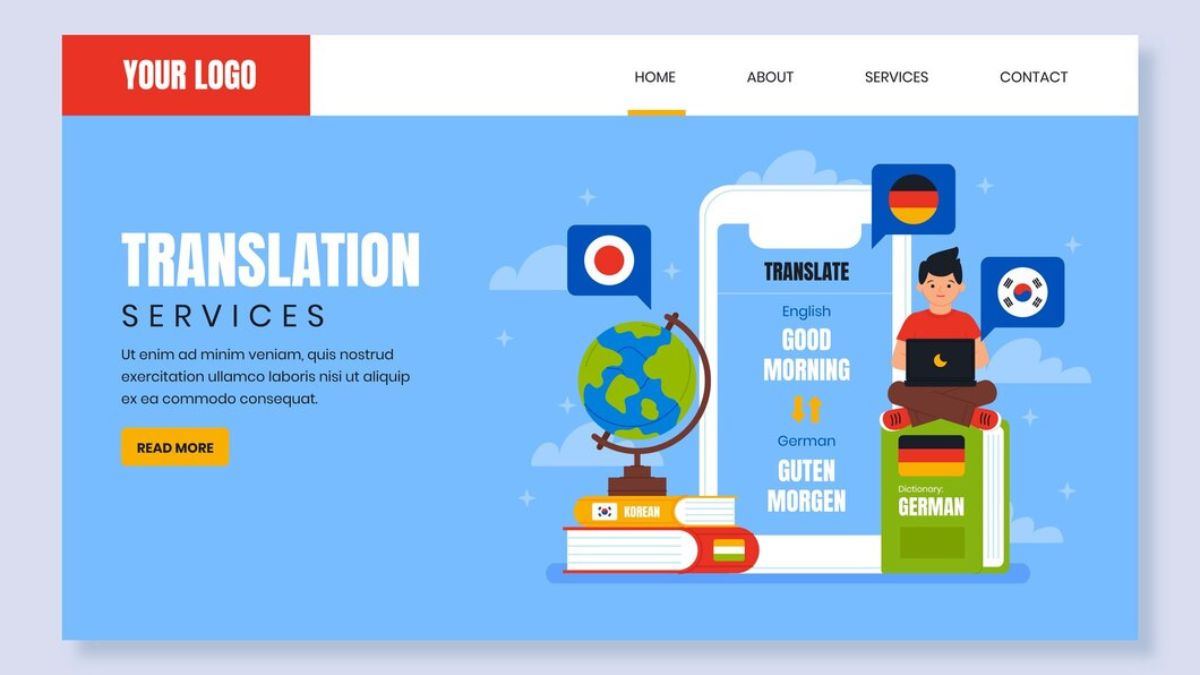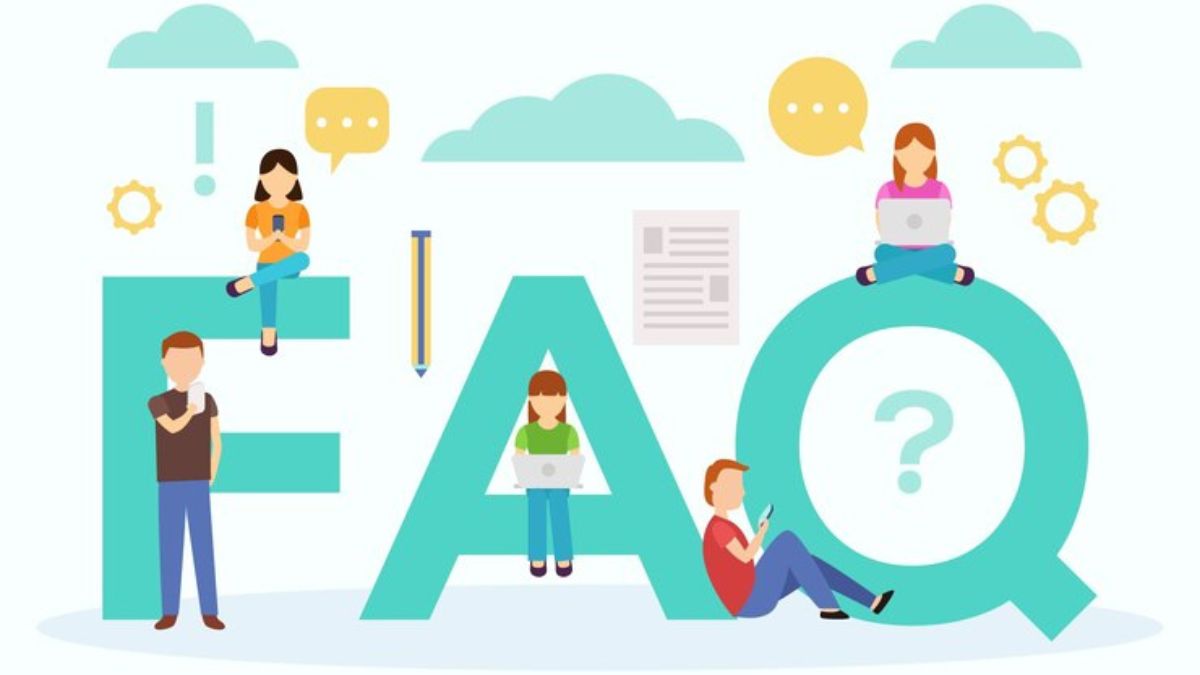TECHNOLOGY
Mastering Translation Using a Traductor for Seamless Communication

Imagine walking into a bustling market in Guadalajara, Mexico, surrounded by vibrant colors, tantalizing aromas, and the bustling chatter of vendors and buyers. You want to engage, to ask questions, and to immerse yourself in the culture through conversation. But there’s just one barrier—language. Enter the humble yet mighty tool we call a traductor or translator, your bridge to understanding and interaction in any foreign environment.
Why Translation Tools Are a Modern Necessity
Language has always been a form of power, a way to connect disparate cultures, and share knowledge worldwide. The need for accurate translation tools, especially in our increasingly globalized world, is more crucial than ever. Whether you’re a traveler, business professional, or student, having access to a reliable traductor can open doors to new opportunities. It doesn’t just help people understand words; it opens up an entire culture.
Translation tools help break down cultural barriers, making the impossible possible, and the confusing clear. They remove the fear of the unknown, turning once daunting situations into manageable adventures. Used properly, they ensure you get the right message across every time. The mastery of using a traductor can be the difference between blending seamlessly into a new environment and sticking out uncomfortably.
The History of Translation Tools
The evolution of translation tools is a fascinating story in itself. From early human interpreters relying solely on their linguistic skills to sophisticated AI-powered applications, the progress is astonishing. Historically, translation has been an art practiced by scholars and intellectuals of the past, translating ancient texts and bridging cultural knowledge gaps.
With the invention of the printing press and, later, the computer, translation saw significant technological advancements. The digital age has brought us tools that can translate spoken and written language in real-time, processing vast amounts of data to give us nearly instantaneous results. Today’s traductor is not just a word converter but an intelligent system capable of cultural nuance.
Digital language translation has become not just a convenience but a necessity. Businesses thrive in multiple markets thanks to rapid and reliable translations, and social media connects billions through language bridging. The traductor is the quiet yet profound force behind much of our modern global communication.
Common Uses for a Traductor
A traductor is a versatile tool with a variety of applications. Perhaps the most common use is for travel. Knowing basic phrases can ease traveler’s anxiety, but having a translator allows even deeper interaction with locals. Travelers who can communicate more effectively will often gain more authentic experiences.
Another key area where traductors prove invaluable is in business. With more companies operating globally, accurate translation ensures that deals don’t get lost in misunderstanding. Marketing material, contracts, and customer service interactions must be precise, showing the critical role played by robust translation tools.
Education also benefits significantly from translation technology. Students studying foreign languages or international topics need tools to help bridge the language gap. Equally, schools offering multilingual programs rely on accurate translation to provide educational material that is both culturally sensitive and understandable. Overall, the traductor facilitates learning and understanding in all areas of life.
How to Choose the Right Translation Tool
Selecting the right traductor depends on several factors, including your specific needs, budget, and required features. First, consider the availability of languages. Not all translators support every language equally; make sure your chosen tool covers the languages you need.
Next, think about the interface and ease of use. For instance, a simple mobile app might suffice for casual travelers, but businesses might require powerful software with advanced features like document translation and voice recognition. Some tools offer subscription plans, while others are free but may include ads or limited features.
Finally, accuracy is paramount. User reviews and comparison articles can reveal how well a tool performs its core function. A traductor must understand context, nuance, and cultural differences, so choose one with strong user feedback and reputed algorithmic capabilities.
The Role of AI in Modern Translation
Artificial Intelligence has revolutionized the capabilities of translation tools, taking them to levels of accuracy and reliability previously thought impossible. AI-driven traductors leverage machine learning to continually improve, learning from vast datasets to understand context and emotion.
These tools don’t just translate words; they learn from them, improving with each interaction. They help translate intricate languages with multiple meanings and cultural implications, providing insights that were once the domain of human translators. AI integration enables near-instantaneous translations and the flexibility to adapt to new language patterns.
Yet, while AI enhances translation technology, human expertise remains vital. Human translators provide cultural insights and accuracy in particularly complex or sensitive translations. AI and human input together can help grow our capacity for global dialogue and understanding. This blend ensures that neither cultural nuances nor human intentions are lost in translation.
Free vs. Paid Translation Services
When choosing a traductor, one of the biggest decisions is whether to go for a free or paid service. Free services like Google Translate and Microsoft Translator are readily accessible and work well for casual use. They’re practical for travel, simple conversations, and quick text translations, making them popular among everyday users.
Paid services, on the other hand, often promise higher accuracy with advanced features. These might include professional document translation, enhanced security for sensitive business communications, or premium support services. Businesses dealing with international clients might find value in investing in these comprehensive solutions.
Each type of service has its place. Casual users benefit from free, simple tools, whereas businesses handling technical documents or sensitive legal content may need the added assurance provided by premium versions. Ultimately, your choice depends on your usage frequency, required features, and budget limitations.
Overcoming Challenges in Translation
Despite advancements, translation tools have their challenges. Languages like Mandarin or Arabic present difficulties due to their complex structures and nuances. Similarly, idioms and cultural references can often lead to mistranslation without proper context or additional input from human experts.
To overcome these challenges, developers must continuously enhance their algorithms, focusing on context and cultural understanding. Users can aid in this process by providing feedback, helping the tools learn and adapt. It’s a collaborative approach where technology and human insight go hand-in-hand to refine and improve translations.
Understanding a tool’s limitations helps users meet these challenges head-on. If a translation seems off, verifying with an additional source or native speaker can prevent misunderstandings. Awareness of these challenges and how to address them makes translation tools powerful allies in global communication.
How Translations Improve International Business
Translation tools are indispensable assets in international business. They ensure that language barriers don’t impede the flow of ideas or negotiations. Companies use them to translate contracts, marketing material, and communications with clients and partners across the globe.
Effective use of a traductor empowers businesses to operate on a global scale, entering new markets with confidence. It ensures that businesses can communicate clearly amid diverse languages and cultures, which ensures their products and services resonate.
The benefits extend beyond simple transactions. Translation facilitates relationship building by showcasing respect and understanding of different cultures. This goodwill can significantly impact a brand’s image and reputation, portraying it as culturally aware and globally minded.
Enhancing Personal Connection through Translation
Translators contribute significantly to personal interactions, enhancing our ability to connect with others. Whether it’s maintaining long-distance friendships, understanding world literature, or participating in multilingual discussions, translation tools foster personal growth and cultural engagement.
They allow us to engage more fully with the global community, exploring perspectives and experiences that enrich our lives. The ability to communicate across languages broadens cultural horizons and deepens understanding between individuals.
With today’s technology, you can download an app and start speaking a new language in minutes, allowing for immediate interactions. What once required years of study is now more accessible, opening up countless possibilities for personal and professional development.
Future Trends in Translation Technology
The future of translation technology promises even more innovative and integrated solutions. Machine translation technology will find its place within virtual and augmented reality environments, potentially creating immersive language and cultural experiences. These advancements will build stronger global communities connected through common understanding.
Furthermore, innovations in wearable technology could grant users real-time translation capabilities wherever they are. This instant access to linguistic tools transforms daily interactions, making any space a bilingual space.
As technology evolves, so too will the integration of translation in everyday life, making language barriers less daunting and international communication more fluent. These innovations promise exciting prospects for individuals and businesses alike in a rapidly shrinking world.
Taking Advantage of Translation Apps
Mobile translation apps have made language learning and communication more convenient. Their portability allows for use on-the-go, perfect for travelers, business teams, or anyone needing quick translations.
Popular apps like Google Translate offer features beyond simple media like text or speech translation, advancing into visual translation and offline access for seamless integration into various scenarios. They provide vast language libraries and user-friendly interfaces to make translation as easy as taking a picture.
These apps make every interaction an opportunity to learn and understand, blending convenience with cutting-edge technology. Harnessing these tools can improve daily interactions, encouraging everyone to connect despite language differences.
The Role of Translation in Cultural Preservation
Translation plays a pivotal role in safeguarding cultural heritage, preserving languages, and ensuring that knowledge and traditions are passed down through generations. By translating literature, historical texts, and oral narratives, translation helps keep cultural identities intact.
More than just a linguistic exercise, translation serves as a cultural bridge. It connects communities and fosters dialogue—vital components of a multicultural world. Through translation, cultures discover shared narratives and unique differences, compiling a richer global tapestry.
Supporting initiatives aimed at saving endangered languages ensures that ancient wisdom and unique worldviews remain part of humanity’s collective legacy. Translation in this context is not only about language but also about preserving cultural specifics for future generations.
Bringing It All Together
Traductors form the heartbeat of modern communication, enabling everyone to participate in the global conversation. Their role in bridging language barriers cannot be overstated, as they promote understanding, collaboration, and worldwide interaction.
Whether used for business, travel, or personal connection, translation tools offer a window into worlds otherwise difficult to access. With continuous advancements and widespread use, they bring people closer and help us understand the vibrant diversity shared by cultures around the world.
A deeper understanding of how to effectively use translation tools empowers users to engage with confidence. For those eager to learn more, consider exploring translation resources or joining language exchange networks to maximize the benefits this technology brings.
Together, these advancements ensure that no distance is too far and no dialogue impeded by language, crafting a world of connections underpinned by understanding and unity.
TECHNOLOGY
Everything You Need to Know About Uhmegle

Have you heard about Uhmegle? This fascinating platform is making waves in the digital world, offering a fresh and exciting way to connect with strangers all over the globe. Imagine sparking unexpected conversations, sharing thoughts, and meeting people entirely out of your routine! Whether you’re looking for new friendships, exploring unique perspectives, or just having some casual chats to brighten your day, Uhmegle is the perfect virtual hangout spot.
If you’re curious about what makes Uhmegle so special and how you can make the most of this platform, you’re in the right place! Stick around, and I’ll give you the lowdown—from how it works to handy tips to elevate your experience!
What Is Uhmegle?
Uhmegle is an online platform that connects users randomly via text or video chat. Think of it as an adventure in social exploration! With just one click, you’re paired with someone from anywhere in the world, and your conversation could go in any direction, from casual chats to thought-provoking debates.
The beauty of Uhmegle lies in its spontaneity and accessibility. There’s no need to create an account or fill out a lengthy form. Simply log in, hit “start,” and voilà—you’re instantly immersed in an interactive space full of possibilities!
It’s free to use, and you can chat anonymously, which is a fun twist for those looking to connect without sharing all their personal details upfront. But don’t worry—there are tools and safety features in place to ensure that your time on Uhmegle remains enjoyable and secure.
Why Uhmegle Stands Out
Curious about what sets Uhmegle apart from other social platforms? Here are some reasons why people can’t stop raving about it!
1. Genuine Spontaneity
There’s a thrill in not knowing who you’ll meet next. Will it be a traveler from Japan, an artist from Italy, or someone navigating the same career challenges as you? Every click opens the door to a new story, new ideas, and a fresh perspective.
2. A Global Audience
Uhmegle connects people from across borders, giving you the chance to interact with other cultures, languages, and lifestyles. It’s like having the entire world at your fingertips—literally.
3. User-Friendly Design
It couldn’t be easier to use! No confusing layouts or overwhelming options. The simplistic interface lets you focus on what really matters—connecting with people.
4. A Break from Social Media Drama
Unlike traditional social media, where likes, shares, and comments can dominate the experience, Uhmegle is free of that noise. It’s just about chatting, connecting, and being authentic.
5. Private, Fun, and Dynamic
With optional anonymity and tools like filters to refine who you chat with (think specific interests), Uhmegle adds a layer of personalization while maintaining a casual, fun atmosphere.
How to Use Uhmegle Like a Pro
If you’re ready to give Uhmegle a spin, here are some quick steps to get you started, plus tips to make it a memorable experience!
Step 1: Visit the Platform
Simply head to the Uhmegle website. There’s no need to download anything!
Step 2: Pick Your Chat Preferences
Choose whether you want to chat via text or video. Both options have their charm—texting is low-key and discreet, while video chat lets you see the person behind the screen, making interactions even more dynamic.
Step 3: Hit Start
Click “Start,” and you’re instantly paired with a random individual. It’s that simple!
Step 4: Engage with Curiosity
Start the conversation with an open mind. You never know what you might learn or who you might meet! Pro tip? Begin with a fun icebreaker, like “What’s the most unexpected thing you’ve done this week?”
Step 5: Stay Respectful and Safe
Use Uhmegle’s built-in tools—like the “Stop” button or reporting options—to keep the experience positive. Respect boundaries, and if a conversation isn’t vibing, feel free to move along. There’s always a new connection waiting!
Bonus Tip!
Make use of Uhmegle’s interest filters. Want to find someone who shares your passion for cinema or game design? Add those as your interests and get matched with like-minded individuals in a snap!
Who Should Try Uhmegle?
Uhmegle is perfect for anyone who loves discovering new things about the world or simply enjoys a good conversation. Are you a student looking to practice a new language? Jump on Uhmegle. An introvert wanting to find meaningful interactions without leaving your comfort zone? Uhmegle’s got you covered.
Even busy professionals can use Uhmegle as a quick mental escape during their day. It’s versatile, exciting, and, best of all, entirely inclusive.
Safety Tips for Enjoying Uhmegle
While Uhmegle aims to make connections fun and safe, here are a few measures to keep in mind while you explore the platform.
- Stay Anonymous: Avoid sharing personal details like your full name, address, or phone number. Keep your privacy intact!
- Use the Tools Provided: If a conversation gets uncomfortable, make use of the “Stop” button to leave the chat or block/report inappropriate behavior.
- Be Respectful: Remember, the other person is also there for a positive experience. Treat them with kindness and respect.
- Supervise Younger Users: If teens or minors in your household are interested in using the platform, ensure supervised usage to maintain a safe online environment.
Why You Should Give Uhmegle a Try
If you’ve been feeling disconnected lately or simply want to add a spark of adventure to your day, Uhmegle could be the solution. Without any commitments or complicated sign-ups, it’s an easy, fun way to expand your horizons and make meaningful connections.
Every chat has the potential to surprise you—whether you gain a new friend, a fresh perspective, or even an unexpected laugh! Why wait? Click, connect, and start exploring the world one conversation at a time.
TECHNOLOGY
TekGPS Login Guide, Everything You Need to Know

Efficient GPS tracking is essential for businesses and individuals looking to monitor vehicles, assets, or personnel. TekGPS Login is a reliable platform that provides a powerful suite of GPS tracking solutions, enabling users to manage their tracking needs effectively. If you’re facing challenges or need clear guidance on how to log in and access your TekGPS account, this blog is for you.
We’ll cover the essential steps to successfully log in to TekGPS, address common troubleshooting issues, and discuss tips for secure account management.
What is TekGPS?
TekGPS is an advanced GPS tracking service that provides businesses and individuals with tools to monitor their assets in real-time. The platform caters to fleet managers, logistics companies, and individuals who require precise location tracking. TekGPS offers features such as:
- Real-time GPS tracking for vehicles, equipment, or personnel
- Detailed reporting on routes, stops, and activity history
- Alerts and notifications for critical events (e.g., unauthorized movement or idling)
- User-friendly interface for managing multiple devices or fleet systems
Before you can take full advantage of TekGPS’s features, you’ll need to successfully access your account through the login process.
How to Access Your TekGPS Account
Step 1: Navigate to the TekGPS Login Page
- Open your preferred web browser (e.g., Chrome, Firefox, Safari).
- Visit the official TekGPS login page. This is typically available at www.tekgps.com/login (make sure the link is secure, indicated by “https://”).
- Bookmark the login page for easier access in the future.
Step 2: Enter Your Credentials
- On the login page, locate the fields for your username and password.
- Enter the email address or username associated with your TekGPS account in the appropriate field.
- Input your password carefully. Passwords are case-sensitive, so ensure that “Caps Lock” is not turned on.
Step 3: Click “Log in”
- Once your login credentials are entered, click the “Log in” button.
- If everything is correct, you’ll be redirected to the TekGPS dashboard, where you can access tracking data and other features.
Troubleshooting TekGPS Login Issues
If you encounter challenges while logging in, here’s how to resolve common problems quickly.
Forgotten Password
- Click the “Forgot Password?” link on the login page.
- Enter your registered email address to receive a password reset link.
- Check your inbox (and spam folder), follow the instructions in the reset email, and create a new password.
- Return to the login page and use the new password to access your account.
Account Locked
- If your account is locked due to multiple failed login attempts, wait a few minutes and try again later.
- Alternatively, contact the TekGPS support team to unlock your account.
Incorrect Credentials
- Double-check your username/email and password for typos.
- Update saved passwords in your browser or password manager if they are outdated.
Browser Compatibility Issues
- Ensure that you’re using an updated version of your web browser.
- Clear your browser’s cache and cookies before logging in again.
Tips for Secure Account Use
Keeping your TekGPS account safe is critical to protecting your assets and sensitive tracking data. Follow these tips to improve account security.
1. Use a Strong Password
- Create a password that includes a combination of uppercase and lowercase letters, numbers, and special characters.
- Avoid using easily guessed information like birthdays or common words.
2. Enable Two-Factor Authentication (2FA)
- If TekGPS supports 2FA, enable this feature to add an extra layer of security. You’ll be required to enter a verification code sent to your phone or email.
3. Log Out After Each Session
- Always log out of your account when using a shared or public device to prevent unauthorized access.
4. Regularly Monitor Activity
- Review your account’s activity logs and GPS tracking reports to ensure there are no unauthorized changes.
Optimizing Your TekGPS Experience
Once logged in, take advantage of TekGPS’s full range of features to maximize efficiency.
Explore Your Dashboard
The TekGPS dashboard offers a bird’s-eye view of all your assets and their statuses. Familiarize yourself with the interface to manage your devices effectively.
Set Up Alerts and Geofencing
Enable notifications for specific events, like when a vehicle leaves a designated area. Geofencing features can enhance security and operational awareness.
Analyze Reports
TekGPS provides detailed reports on movement, stops, and fuel usage. Use these insights to improve fleet efficiency and reduce costs.
Final Thoughts
TekGPS is your partner in advanced GPS tracking, offering powerful tools to simplify asset monitoring and fleet management. By following the steps outlined in this guide, you can easily log in to your TekGPS account and tackle any issues that come your way.
Got questions about your tracking setup? Visit the TekGPS support page for detailed FAQs or contact their customer service.
TECHNOLOGY
What is 70537865 Allis? Understanding Its Significance

Introduction
Numbers can be cryptic, but some carry specific and meaningful designations. One such number is 70537865 Allis, which might pique curiosity for those coming across it. What does it signify? Is it related to technology, machinery, or a cataloged product? This blog post unpacks what 70537865 Allis represents, its context, and its importance. Whether you’re a professional searching for clarity or a curious reader wanting precise information, this guide is here to simplify your understanding.
A Deep-Dive Into 70537865 Allis
What Does “70537865 Allis” Refer To?
At its core, 70537865 Allis is recognized as a part number associated with Allis-Chalmers Corporation, a company historically known for manufacturing industrial equipment such as tractors, engines, construction tools, and power systems. This specific designation refers to a machine part, typically cataloged to streamline ordering, repairs, or replacement processes.
Quick facts about Allis-Chalmers:
- Founded in 1901, Allis-Chalmers became a global leader in machinery manufacturing.
- The company has roots in agriculture, mining, and power generation industries.
- While it ceased as an independent entity in 1999, its equipment and parts remain widely utilized and supported.
Why Are Part Numbers Important?
Part numbers like 70537865 Allis ensure smooth operations for various industries by helping:
- Identify specific components for equipment maintenance.
- Standardize inventory records, avoiding confusion with similar parts.
- Simplify communication between manufacturers, distributors, and end-users.
For businesses and repair professionals, a precise part number is critical to ensuring compatibility, quality, and operational efficiency when dealing with intricate machinery.
The Applications of 70537865 Allis
1. Equipment Repairs and Maintenance
Machinery in agriculture or construction is subject to wear and tear. A part number like 70537865 Allis could play a key role in:
- Replacing worn-out components: Ensuring machines continue to function efficiently.
- Streamlining repairs: Helping technicians locate the correct replacement quickly.
2. Machinery Upgrades
Older Allis-Chalmers equipment often requires augmentation to match modern standards. Knowing the right part number simplifies upgrades while ensuring historical machines maintain their operational legacy.
3. Understanding Legacy Equipment
For those researching or working with legacy machinery, having specific identifiers like 70537865 Allis can:
- Provide historical insights into machine models.
- Support equipment documentation and archival efforts.
Where to Find 70537865 Allis Parts?
Primary Sources:
- OEM Support Channels:
Though Allis-Chalmers no longer operates independently, many companies still supply its parts. AGCO Corporation, a prominent agricultural manufacturer, is often referenced for Allis-Chalmers product support.
- Distributors and Dealers:
Numerous third-party vendors specialize in legacy equipment and can provide part numbers like 70537865. Examples include:
- Industrial and agricultural equipment retailers.
- Specialized online platforms for obsolete or hard-to-find parts.
Secondary Markets:
- Used Parts Dealers:
Companies dealing in recycled or refurbished Allis-Chalmers parts often hold uncommon numbers like 70537865.
- Online Marketplaces:
Platforms like eBay, Craigslist, or machinery-focused e-commerce websites sometimes stock rare parts for niche buyers.
Tips for Searching and Ordering
- Verify the Part Number:
Double-check the part number (70537865) before purchasing to ensure compatibility with your equipment.
- Look for Manufacturer Documentation:
Check maintenance and operation manuals to confirm the need for this specific part.
- Choose Reputable Vendors:
It’s crucial to work with sellers who guarantee the authenticity and quality of legacy parts.
How to Maintain Equipment Using 70537865 Allis
Once you’ve acquired parts like 70537865 Allis, proper application and maintenance help extend their lifespan. Here’s how:
- Follow Manufacturer Guidelines:
Install parts per the machine’s operation manual to avoid misuse.
- Schedule Regular Inspections:
Routine checks can preemptively detect wear and address issues early.
- Use Compatible Tools:
Always use tools designed for the specific machinery to ensure proper handling.
What Makes Allis-Chalmers Relevant Today?
While Allis-Chalmers ceased operations over two decades ago, its machines and parts, such as 70537865 Allis, continue to impact industrial, construction, and agricultural functions. Their durability and reliability have made them treasured by enthusiasts and professionals alike. The simplicity provided by original part numbers remains a testament to the company’s legacy of precision and customer-focused engineering.
Final Thoughts – Navigating Legacy Machinery with Confidence
The significance of 70537865 Allis lies not just in its part number but in its role in preserving operations for Allis-Chalmers machinery. Whether in a field, construction site, or archive, understanding these numbers helps unlock the full potential and historical value of equipment.
For those who rely on such parts, take the first step to optimize your machinery today by partnering with reputable suppliers and adhering to industry-maintained best practices.
-

 TECHNOLOGY5 months ago
TECHNOLOGY5 months agoRevo Technologies in Murray Utah Leading the Charge in Tech Innovation
-

 NEWS5 months ago
NEWS5 months agoKuttymovies7: Everything You Need to Know
-

 CRYPTO5 months ago
CRYPTO5 months agoCrypto Goldmine Exploring FintechZoom’s Top Picks
-

 TECHNOLOGY5 months ago
TECHNOLOGY5 months agoRiding the Waves of Innovation Deep Offshore Technology’s Impact on Ocean Exploration
-

 NEWS5 months ago
NEWS5 months agoThe Secret World of CFBWH and Why It’s Taking Over
-

 EDUCATION5 months ago
EDUCATION5 months agoThe Future of Learning with Educational Assistants
-

 CRYPTO5 months ago
CRYPTO5 months agoExploring the World of Cryptocurrency with NewZnav
-

 NEWS5 months ago
NEWS5 months agoShari Ann Chinnis Indianapolis: A Profile in Passion and Dedication
